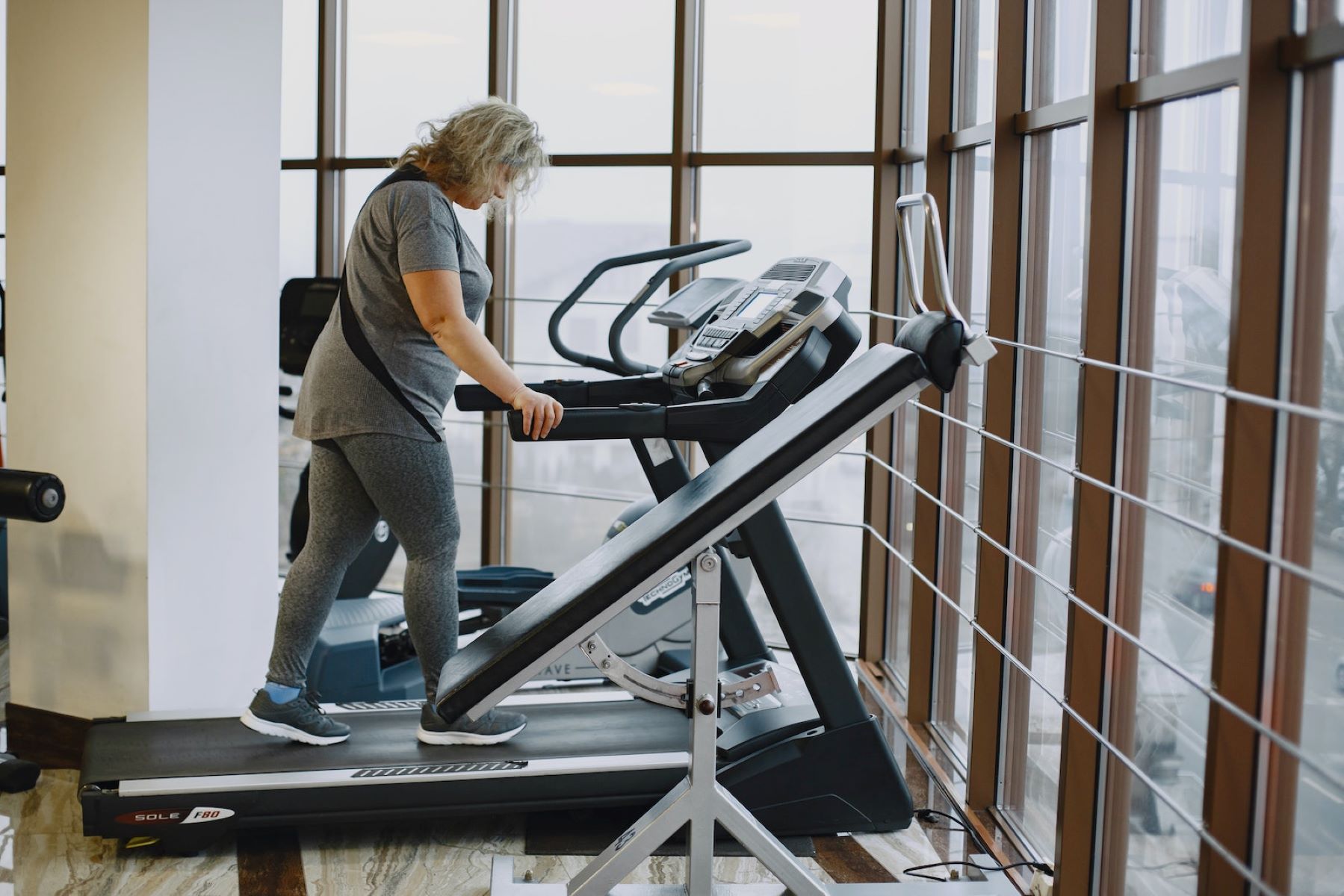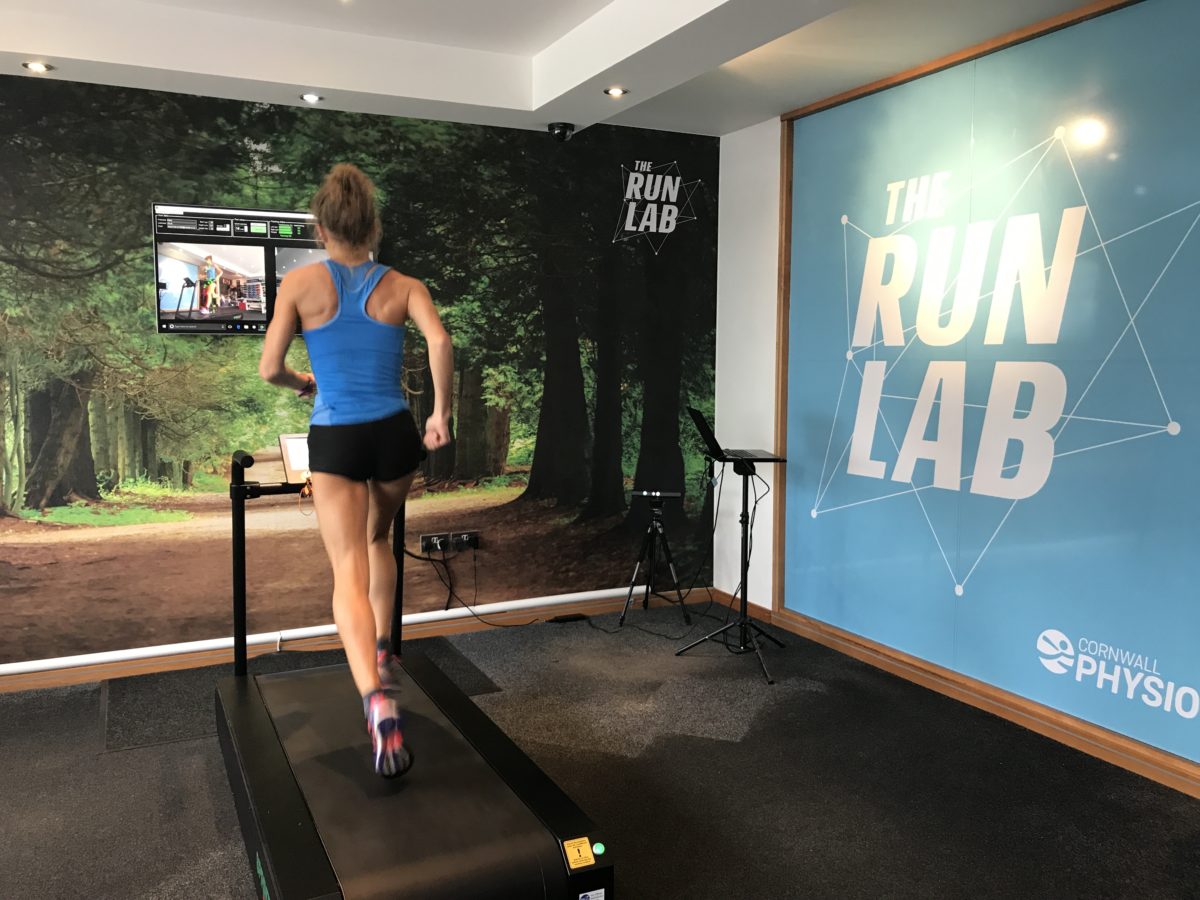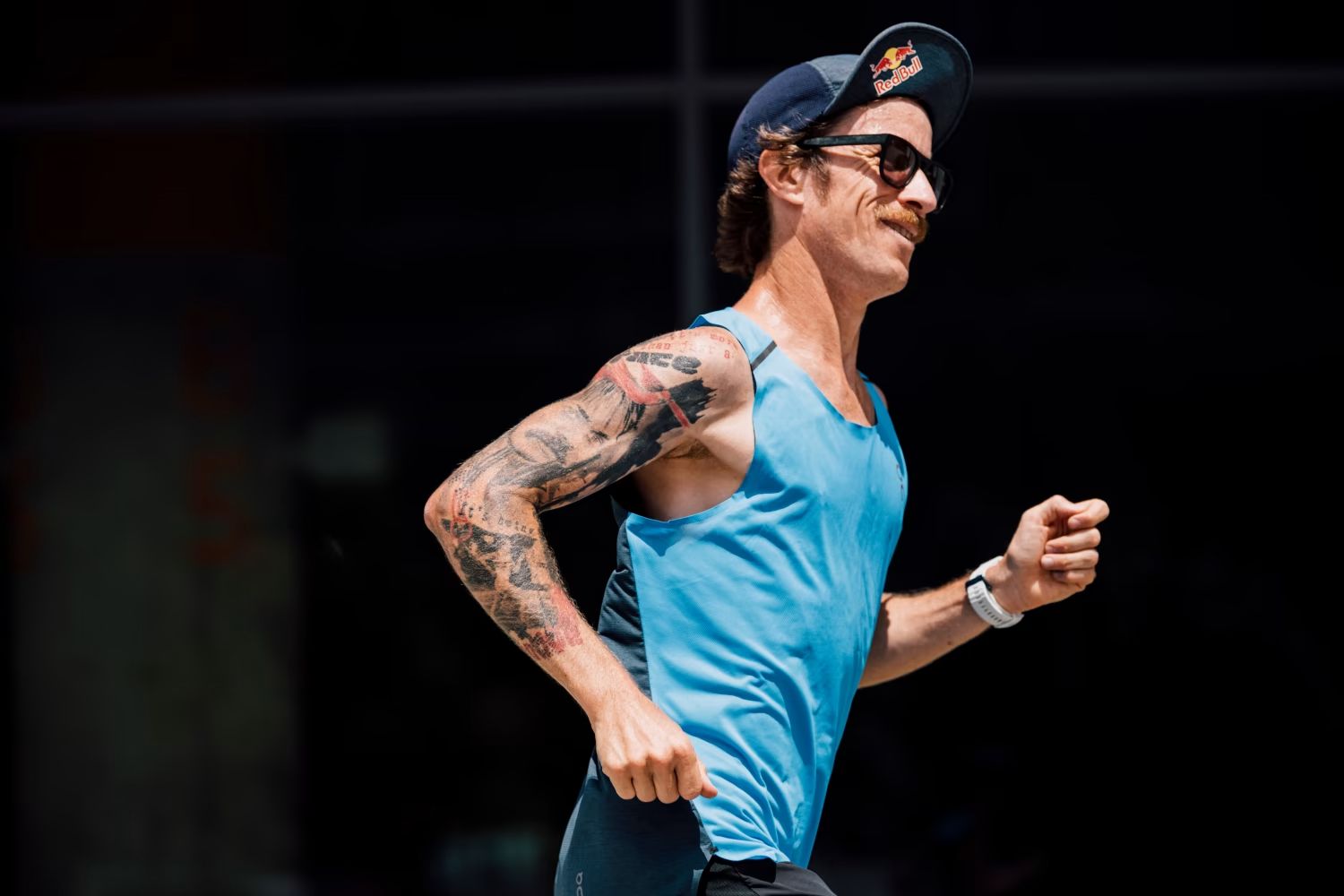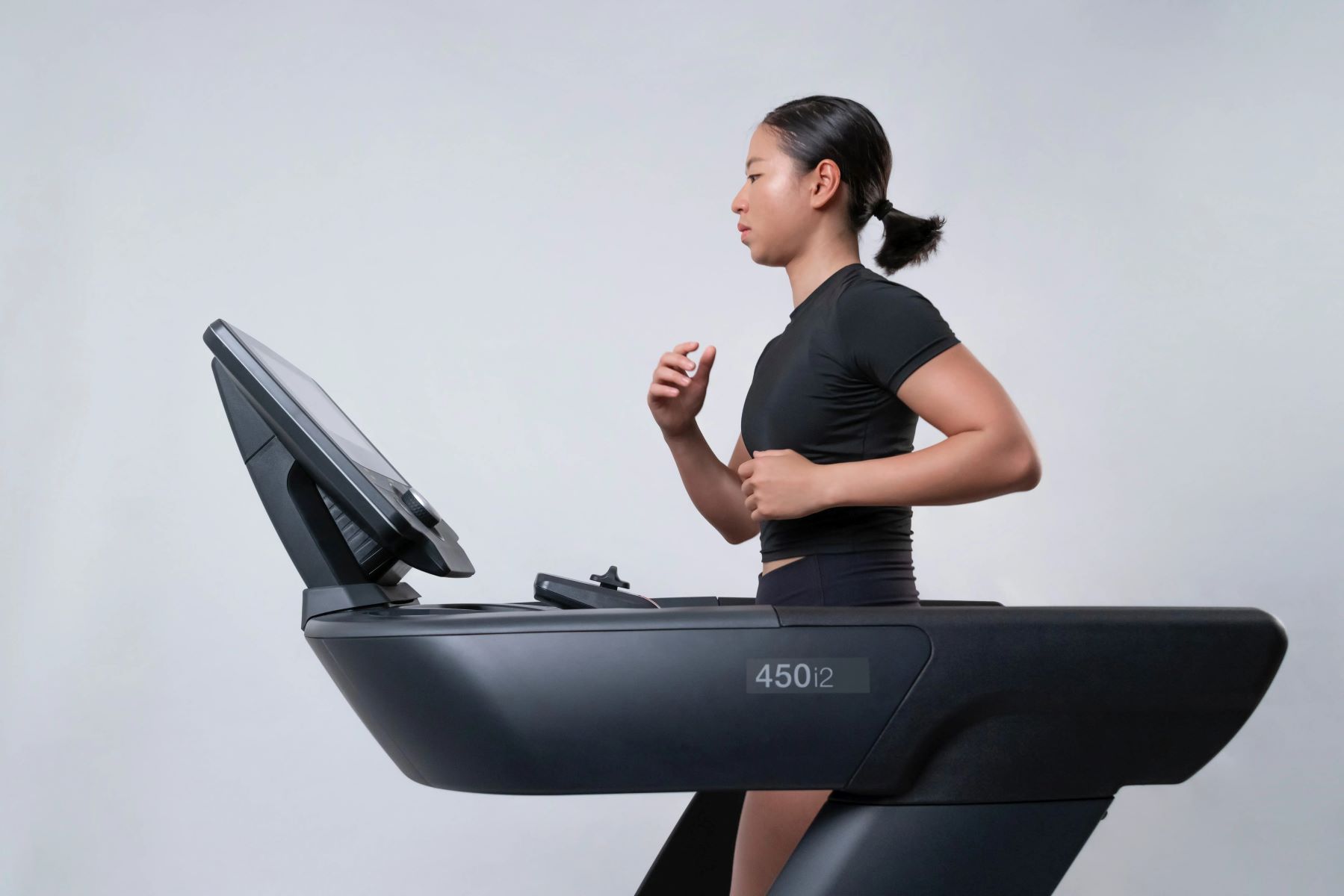Home>Misc>Featured>How To Move Your Arms For Distance Running


Featured
How To Move Your Arms For Distance Running
Modified: August 21, 2023
Learn expert tips on how to optimize your arm movement for featured distance running, improving your performance for better results.
Introduction
When it comes to distance running, there’s no doubt that your legs play a crucial role in propelling you forward. However, many runners overlook the importance of proper arm movement in optimizing their running performance. The way you move your arms can have a significant impact on your overall running efficiency, speed, and endurance.
In distance running, the arms serve a dual purpose. They help to maintain balance and stability, while also contributing to your forward propulsion. By understanding and implementing the basic principles of arm movement, you can maximize your running potential and achieve better results.
In this article, we will explore the importance of proper arm movement in distance running and provide you with practical tips to optimize your arm swing technique. Whether you’re a seasoned runner looking for ways to improve your performance or a novice runner seeking guidance on how to move your arms correctly, this article will serve as a comprehensive guide.
So, if you’re ready to take your distance running to the next level, let’s delve into the world of arm movement and uncover the secrets to running with efficiency and precision.
Importance of Proper Arm Movement in Distance Running
Proper arm movement is essential in distance running as it has a direct impact on your overall running efficiency, speed, and endurance. The way you position and swing your arms can help you maintain balance, conserve energy, and synchronize your movements, leading to improved performance.
Firstly, the arms play a crucial role in maintaining balance and stability while running. As your legs move in a rhythmic motion, your arms act as counterbalances, helping you maintain a steady and upright posture. Correct arm movement can help prevent excessive swaying or tilting of your body, reducing the risk of strain or injury.
Moreover, effective arm movement contributes to your forward propulsion. As your legs push off the ground, your arms work in coordination, swinging back and forth to generate momentum. The movement of your arms helps transfer energy from your upper body to your lower body, maximizing the power and efficiency of each stride.
Additionally, proper arm movement aids in the synchronization of your running mechanics. Your arms and legs should work together in harmony, with a balanced and coordinated rhythm. When your arms move in sync with your legs, it helps maintain a smooth and efficient running motion. This synchronization can improve your running economy, allowing you to cover more distance while expending less energy.
Furthermore, your arm swing can influence your breathing pattern during distance running. Coordinated arm movement can help regulate your breathing, as the motion of swinging your arms naturally syncs with your inhales and exhales. This synchronization can enhance your respiratory efficiency and oxygen intake, helping you maintain a steady pace and endurance over longer distances.
Overall, proper arm movement is an integral component of distance running. It not only aids in maintaining balance and stability but also contributes to your forward propulsion, synchronization of movements, and improved breathing. By focusing on optimizing your arm movement, you can enhance your running performance and achieve your goals with greater efficiency.
Basic Principles of Arm Movement
To optimize your arm movement in distance running, it is important to understand the basic principles that govern proper technique. By following these principles, you can ensure that your arms are contributing effectively to your overall running performance.
The first principle is to maintain a relaxed posture throughout your run. Tension in your upper body can impede the flow of movement and waste valuable energy. Keep your shoulders relaxed, allowing them to move freely without stiffness. A relaxed upper body will promote a fluid arm swing and reduce the risk of muscle fatigue.
The second principle is to maintain a slightly bent arm position. Your elbows should be at roughly a 90-degree angle, allowing for a natural and efficient arm swing. Avoid locking your elbows or letting them swing too wildly, as this will cause unnecessary energy expenditure and may throw off your balance.
The third principle is to ensure that your arm swing is focused primarily in the forward-backward direction. Your arms should swing parallel to your body’s midline, with minimal lateral movement. Excessive side-to-side swinging can lead to wasted energy and an inefficient running form.
Another important principle is to maintain a consistent and rhythmic arm swing throughout your run. Your arms should move in a pendulum-like motion, with each swing happening in sync with your leg stride. Consistency in your arm movement pattern helps maintain balance and coordination, enhancing your overall running efficiency.
Lastly, it is crucial to avoid crossing your arms over the midline of your body during the arm swing. Crossing your arms in front of your body can disrupt your running form and throw off your balance. Focus on maintaining a forward-backward arm movement pattern, keeping your arms swinging parallel to each other.
By following these basic principles of arm movement, you can optimize your running technique and harness the power of your arms to enhance your overall performance. Remember to practice these principles in your training runs until they become instinctive and natural.
Positioning of Arms
The positioning of your arms in distance running plays a crucial role in maintaining balance, stability, and efficient movement. Paying attention to the correct positioning of your arms will help you optimize your running performance and reduce the risk of injury.
Firstly, it is important to keep your arms at a comfortable and natural position. Your arms should be relaxed, with a slight bend at the elbows. Avoid tensing up or raising your shoulders, as this can lead to unnecessary strain and fatigue.
The height at which you hold your arms is also important. Your hands should be at waist-level, with your elbows positioned at a 90-degree angle. This allows for optimal arm swing and prevents your arms from swinging too high or too low.
Additionally, you should aim to keep your arms close to your body. Your arms should not cross the midline of your body during the arm swing, as this can disrupt your balance and waste energy. By keeping your arms parallel to your body, you can maintain a more efficient running form.
Another important aspect of arm positioning is to avoid clenching your fists tightly. Instead, keep a relaxed grip with your fingers lightly curled. This will help prevent unnecessary tension in your arms and hands, allowing for a more fluid and natural arm swing.
Finally, be conscious of your arm movement in relation to your upper body. Your arms should move in coordination with your torso, with minimal twisting or rotation. This ensures a smooth and efficient movement pattern, reducing any wasted energy from unnecessary movements.
Remember, the positioning of your arms should feel comfortable and natural. Experiment with different arm positions and observe how they affect your overall running form. Find the arm positioning that feels most efficient and allows for a smooth and rhythmic arm swing.
By focusing on proper arm positioning, you can optimize your running mechanics and enhance your overall running performance. Practice maintaining the correct arm position during your training runs until it becomes second nature, and you’ll experience the benefits in your distance running endeavors.
Arm Swing Technique
The arm swing technique is a key component of proper arm movement in distance running. By mastering this technique, you can maximize your running efficiency and contribute to your overall performance. Here are some tips to help you perfect your arm swing technique:
- Maintain a relaxed and natural arm swing. Your arms should swing back and forth with a smooth and effortless motion. Avoid any excessive tension or stiff movement in your arms.
- Ensure that your arms swing in a pendulum-like motion, moving primarily in the forward-backward direction. The arm swing should be parallel to your body’s midline, with minimal lateral movement.
- Coordinate your arm swing with your leg stride. As your right leg moves forward, your left arm should swing forward, and vice versa. This opposite, coordinated movement enhances your balance and running efficiency.
- Focus on a compact arm swing. Your arms should not swing too wide or too high. Keep the movement controlled and close to your body, allowing for efficient energy transfer.
- Counterbalance your arm swing with your leg stride. As your right leg moves forward, your left arm should swing forward slightly to create balance and stability. This counterbalancing action helps maintain your body’s equilibrium.
- Engage your core muscles while swinging your arms. A strong core provides stability and helps optimize the movement of your upper and lower body. This can enhance your overall running form and efficiency.
- Imagine holding a small object, such as a delicate fruit, in each hand. This visualization can help you maintain a calm and controlled arm swing, preventing any unnecessary energy expenditure or erratic movement.
- Practice a gradual and controlled arm swing speed. Avoid swinging your arms too fast or forcefully, as it can disrupt your running rhythm and waste energy. Find a relaxed and natural arm swing tempo that suits your running style.
As with any aspect of running technique, mastering the arm swing technique takes practice. Focus on incorporating these tips into your training runs and gradually build muscle memory. Over time, your arm swing will become more efficient and automatic, contributing to improved distance running performance.
Focus on Relaxed Shoulders and Elbows
When it comes to proper arm movement in distance running, maintaining relaxed shoulders and elbows is essential. Tension in these areas can hinder your running efficiency and lead to unnecessary strain and fatigue. Here’s why you should focus on keeping your shoulders and elbows relaxed throughout your run:
The first reason is that relaxed shoulders promote a fluid and natural arm swing. When your shoulders are tense, it restricts the movement of your arms and interferes with your running form. On the other hand, relaxed shoulders allow for a more efficient swing, facilitating a smooth and coordinated motion.
Furthermore, relaxed shoulders contribute to a more relaxed upper body overall. Tension in your shoulders can cause a chain reaction of tension throughout your body, leading to energy wastage and muscle fatigue. By consciously relaxing your shoulders, you can create a sense of ease and flow in your running stride.
Similarly, keeping your elbows relaxed is crucial in maintaining an efficient arm swing. When your elbows are tense or rigid, it restricts the movement of your arms and can interfere with the natural motion of your upper body. Relaxed elbows allow for a freer and more effective swing, leading to improved running mechanics.
Relaxed shoulders and elbows also help prevent injury in the upper body. When you run with tension in these areas, it puts unnecessary stress on the muscles, tendons, and joints. Over time, this can lead to overuse injuries such as shoulder impingement or elbow tendonitis. By consciously focusing on relaxation, you can reduce the risk of these types of injuries.
One effective technique to maintain relaxed shoulders and elbows is to periodically check in with yourself during your run. Take a moment to consciously release any tension in your shoulders and allow them to drop down. Similarly, visualize your elbows as loose and flexible, rather than tightly held or locked in place.
Incorporating exercises such as shoulder rolls and gentle arm swings before and after your run can also help promote relaxation in these areas. These exercises can loosen up the muscles and increase blood flow, preparing your upper body for optimal arm movement.
By focusing on relaxed shoulders and elbows, you can optimize your arm movement in distance running. Practice this mindset and technique in your training runs, and soon it will become second nature, allowing you to run with greater fluidity and efficiency.
Coordinating Arm and Leg Movements
Coordinating your arm and leg movements is crucial for achieving optimal running mechanics and overall performance in distance running. When your arms and legs move together in a coordinated manner, it promotes balance, efficiency, and power throughout your stride. Here’s why you should focus on coordinating your arm and leg movements:
One of the main benefits of coordinating your arm and leg movements is improved balance. As your legs drive your forward motion, your arms act as counterbalances, helping to maintain your body’s equilibrium. When your arms and legs are in sync, it reduces the risk of excessive swaying or tilting, allowing you to run with stability and control.
In addition to balance, coordinated arm and leg movements contribute to a more efficient running stride. When your arms and legs work in harmony, they generate a coordinated flow of movement that enhances your overall running economy. This economy allows you to cover more ground with each stride, conserving energy and increasing your endurance.
Coordinated arm and leg movements also improve power transfer during your run. As your arms swing forward and backward, they generate momentum that is transmitted to your lower body through your core. This additional power helps propel you forward and contributes to a stronger and more explosive running stride.
Another benefit of coordinating your arm and leg movements is improved rhythm. When your arms and legs move together in a synchronized pattern, it creates a natural and consistent running cadence. This rhythmic motion helps maintain your pace and optimize your running efficiency, especially during longer distance runs.
To effectively coordinate your arm and leg movements, aim for opposite arm and leg action. As your right leg strides forward, your left arm should swing forward, and vice versa. This reciprocal movement pattern creates a natural syncing of the arms and legs and optimizes your overall running stride.
It is important to note that the coordination of your arm and leg movements may take some practice. Start by consciously focusing on the synchronization during your training runs, paying attention to the opposite arm and leg action. With time and repetition, it will become more automatic and ingrained in your running mechanics.
Finally, incorporating arm and leg drills and exercises into your training can further enhance the coordination between these two vital components. Examples include running with high knees while actively swinging your arms, or performing skipping drills with an emphasis on coordinated arm and leg movements.
By focusing on coordinating your arm and leg movements, you can optimize your running performance. Practice this key aspect of running technique, and you’ll experience improved balance, efficiency, power transfer, and rhythm in your distance running endeavors.
Common Mistakes to Avoid
While it’s important to focus on proper arm movement in distance running, it’s equally crucial to be aware of common mistakes that can hinder your performance. By avoiding these mistakes, you can optimize your running technique and enhance your overall running experience. Here are some common arm movement mistakes to watch out for:
- Excessive arm swinging: One of the most common mistakes is swinging your arms too much, either in width or height. This can result in wasted energy and throw off your running balance. Aim for a controlled and compact arm swing that is parallel to your body’s midline.
- Tense shoulders and fists: Another mistake is tensing up your shoulders or clenching your fists tightly. This restricts the movement of your arms and wastes energy. Remember to keep your shoulders relaxed and your fists lightly curled to maintain a natural and fluid arm motion.
- Crossing arms over the midline: Crossing your arms in front of your body disrupts your running form and can impede your balance. Keep your arms swinging on their respective sides, parallel to your body. This ensures a more efficient and effective arm movement pattern.
- Inconsistent arm swing rhythm: Lack of a consistent arm swing rhythm can negatively impact your overall running mechanics. Your arm swing should be coordinated with your leg stride, with each arm swing matching the opposite leg’s movement. Avoid mismatched or irregular arm swings that disrupt your running cadence.
- Overemphasis on arm strength: While proper arm movement is crucial, it’s important to avoid solely relying on arm strength to propel yourself forward. Your arm swing should complement your leg stride, sharing the workload without overpowering it. Focus on a balanced and coordinated effort between your arms and legs.
- Overstriding with arm extension: Another mistake is overextending your arm swing forward. This can create unnecessary tension and restrict your running motion. Instead, aim for a relaxed and natural arm extension, allowing for a comfortable forward-backward swing motion.
- Ignoring core engagement: Neglecting to engage your core muscles can lead to a lack of stability and inefficient arm movement. Your core provides a strong foundation for your arms and legs to work together effectively. Be mindful of activating your core muscles to enhance your arm swing and overall running performance.
Awareness of these common mistakes will help you refine your arm movement and improve your running technique. Focus on maintaining a relaxed and controlled arm swing, coordinating your arm and leg movements, and avoiding unnecessary tension or overcompensation in your running form.
Regular self-assessment during your training runs, combined with seeking feedback from a running coach or expert, can also be beneficial in identifying and correcting any arm movement mistakes specific to your individual running style.
By being mindful of these common mistakes and making the necessary adjustments, you can optimize your arm movement and enhance your overall distance running performance.
Benefits of Correct Arm Movement in Distance Running
Implementing correct arm movement in distance running can have numerous benefits, enhancing your overall performance and contributing to a more efficient running stride. Here are some key benefits of focusing on proper arm movement:
- Improved running efficiency: Correct arm movement helps optimize your running economy, allowing you to cover more distance while expending less energy. By coordinating your arm swing with your leg stride, you create a balanced and efficient running motion that maximizes your forward propulsion.
- Enhanced balance and stability: Your arms act as counterbalances to maintain balance and stability while running. By positioning and swinging your arms correctly, you can prevent excessive swaying or tilting, ensuring a steady and upright posture that boosts your running control.
- Increased running speed: Coordinated arm and leg movements contribute to enhanced running speed. Through the transfer of energy from your upper body to your lower body, an efficient arm swing can help power your stride, allowing you to achieve faster race times and improved overall speed.
- Optimized respiratory efficiency: Proper arm movement plays a role in regulating your breathing pattern during distance running. Coordinated arm swings naturally sync with your inhales and exhales, helping you establish a consistent and efficient breathing rhythm. This efficient respiration allows for improved oxygen intake and endurance.
- Reduced risk of injury: Correct arm movement can help prevent injuries in various areas, including the shoulders, elbows, and upper back. By maintaining a relaxed and controlled arm swing, you minimize the risk of repetitive strain or excessive tension in these areas, promoting a healthier and safer running experience.
- Improved running form: Focusing on proper arm movement encourages a better overall running form. Coordinated arm and leg movements, along with relaxed shoulders and elbows, contribute to a more fluid, balanced, and synchronized running stride. This improved form reduces wasted energy and enhances your running efficiency.
- Enhanced mental focus and engagement: Paying attention to your arm movement in distance running keeps your mind engaged, promoting focus and concentration. By actively maintaining proper arm technique, you stay mentally connected to your running mechanics, increasing your overall mindfulness and enjoyment of the running experience.
By incorporating correct arm movement into your distance running routine, you can reap these impressive benefits. Practice and repetition will help solidify these habits until they become second nature, allowing you to unlock your full running potential and achieve your performance goals.
Conclusion
Proper arm movement is a crucial yet often overlooked aspect of distance running. By focusing on optimizing your arm technique, you can enhance your running efficiency, speed, and endurance. Throughout this article, we explored the importance of arm movement, the basic principles involved, and the benefits of correct arm positioning and coordination.
By maintaining a relaxed posture, positioning your arms correctly, and practicing a fluid arm swing technique, you can improve your overall running form. Coordinating your arm and leg movements enhances your balance, power transfer, and rhythm, while avoiding common mistakes helps you avoid unnecessary tension and incorrect movement patterns.
The benefits of correct arm movement in distance running are numerous, ranging from improved running efficiency and increased speed to enhanced balance, reduced injury risk, and optimized respiratory function. By paying attention to your arm movement, you can achieve a more efficient and enjoyable running experience, surpassing your performance goals.
Remember, developing proper arm movement techniques takes practice and consistency. Incorporate these principles into your training runs, gradually refining your arm swing and coordination. Seek feedback from running experts or coaches to ensure you’re on the right track.
So, the next time you hit the road or the trails, pay attention to how you move your arms. Let them propel you forward with purpose and efficiency. By harnessing the power of proper arm movement, you’ll unlock your full running potential and embark on a new level of distance running performance.








